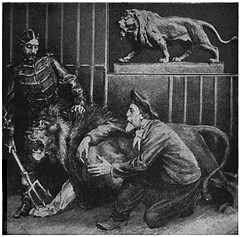Robert H. Stanley of Greenfield, N.H., must have angered the rain gods — he went to bed during a terrific downpour on Aug. 2, 1966, and awoke to find it had targeted his house alone:
After finding the 5.75 in. of rain in the gage, he inquired from a neighbor 0.3 miles to the east. He found that the neighbor had but 0.50 in. in his gage. He thereupon examined the countryside for visible effects. The road washout extended for only a few hundred feet. Upon going one-half mile in either direction, no evidence of rain erosion of sand or gravel could be found. South of the house, beginning at the gage which was mounted on a pole, well distant from structures or trees, there stretches a 10-acre field. The knee-high grass therein was beaten down flat. By afternoon it began to revive. By the following noon it was erect. To the west of the house, a dry-wash brook running bankful at dawn was empty by 0800 EST. Drawing a line around the traces of erosion, one obtains an oval area about a mile north-south and about three-fourths of a mile east-west. Within this area, rain varied from the order of 1 in. on the limits to almost 6 in. in the center. Outside this limit, rain is believed to have fallen off sharply to less than one-fourth of an inch, generally within a few thousand feet.
(Monthly Weather Review, 93:164-68, 1970)




